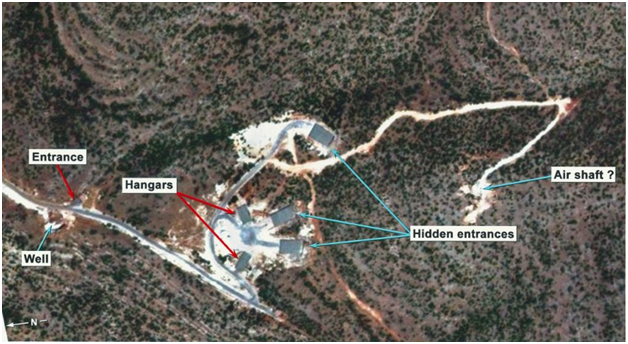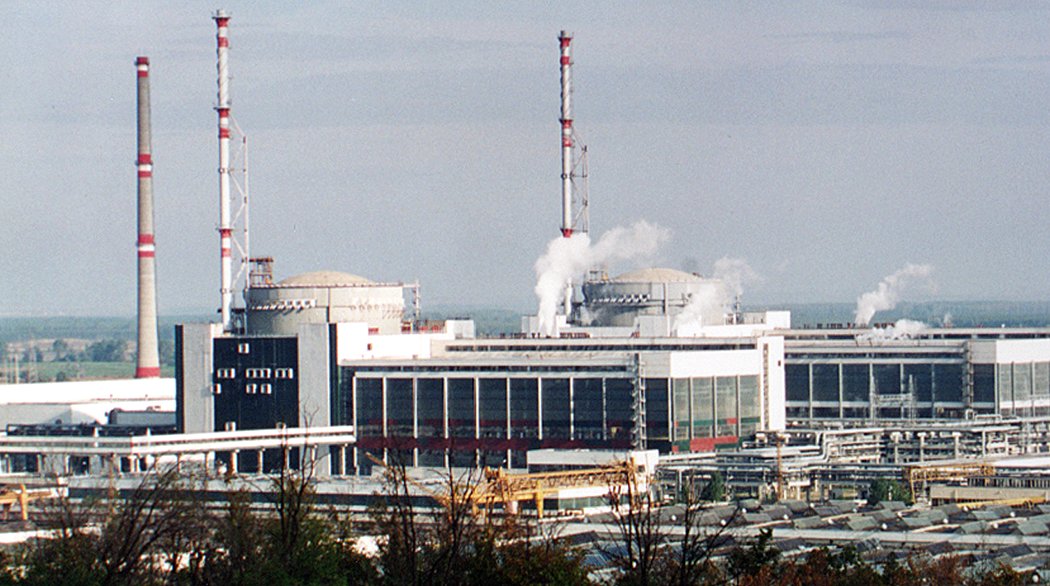
Blog
-
Geiger Readings for January 13, 2014
Ambient office = 94 nanosieverts per hourAmbient outside = 102 nanosieverts per hourSoil exposed to rain water = 91 nanosieverts per hourDanjou pear from Central Market = 112 nanosieverts per hourTap water = 108 nanosieverts per hourFiltered water = 91 nanosieverts per hour -
Nuclear Weapons 118 – Is Syria Working On Nuclear Weapons at Hidden Base?
In September of 2007, Israeli jets bombed an unidentified target in Syrian desert about twenty miles from Deir el-Zor. The Syrians said that some Israeli jets invaded Syrian airspace and were forced to leave after dropping some munitions on in the desert. They claimed that the munitions caused no damage or injury. The Israelis said that their jets never went into Syria at all on the day in question. The two countries have technically been at war since the Jewish state was founded in 1948 but they cooperated in covering up the Israeli military action against Syria.
It is now thought that Syria was trying to build a nuclear weapon at a hidden base called Kibar in the desert and the Israeli jets destroyed the secret base on their bombing raid. Eventually, Syria, a signatory of the international nuclear non-proliferation treaty, allowed inspectors from the International Atomic Energy Agency to enter the ruins of Kibar. Although the Syrians had tried to remove all traces of nuclear activity from Kibar, uranium particles were found at the site.
Der Spiegel, a German news magazine, has just published an article claiming that Syria has a secret nuclear research installation near the Lebanese border. The article referred to a report from the IAEA about the site. In the report, the IAEA said that they thought that Syria had a uranium stockpile that could be enriched to create at least five nuclear bombs. Western intelligence agencies have said that Syria is continuing work on nuclear weapons in a secret underground facility. There are supposed to be eight thousand nuclear fuel rods at the hidden facility and a working nuclear reactor. This base is supposed to be just west of the city of Qusayr less than a mile from the Lebanese border.
Satellite imagery shows that heavy construction and digging is taking place near Qusayr even though the Syrians have been trying to hide their activity. During the current civil war, there was intense fighting in the Qusayr area but Syrian forces repelled the rebels. The site is connected to the national power grid and has a deep well. Intercepted radio messages in Syria mentioned an “atomic factory” at Qusayr. The project is apparently referred to as “Zamzam”, the name of a well that legend says was created by God to slake the thirst of the wife and daughter of Abraham in Mecca.
Syria denies that they are involved in nuclear research at Qusayr but that is to be expected regardless of whether or not they are actually working on a nuclear device there. The fact that their sworn enemy Israel has a nuclear arsenal would be an incentive for Syria to develop their own nuclear weapons. A lot of attention has been focused on Iran because many believe they are working on developing nuclear weapons. Perhaps more attention should be directed at Syria. The situation there is especially troubling because of the civil war. If the Syrian government were to fall and the Qusayr site occupied by ISIS, then the radical Islamists might acquire nuclear weapons. Even if they did not find a nuclear bomb at Zamzam, a cache of enriched uranium would allow them to build dirty bombs.
Satellite image of Zamzam nuclear facility near Syria’s border with Lebanon:
-
Radiation News Roundup January 12, 2014
Outright failures continue to plague Fukushima plant. enenews.com
Australia today expressed confidence that negotiations on the civil nuclear deal with India will not “drag on” as political clearance has already been given and only technical issues are required to be resolved. economictimes/indiatimes.com
-
Geiger Readings for January 12, 2014
Ambient office = 135 nanosieverts per hourAmbient outside = 116 nanosieverts per hourSoil exposed to rain water = 112 nanosieverts per hourRomaine lettuce from Central Market = 106 nanosieverts per hourTap water = 79 nanosieverts per hourFiltered water = 72 nanosieverts per hour -
Geiger Readings for January 11, 2014
Ambient office = 106 nanosieverts per hourAmbient outside = 72 nanosieverts per hourSoil exposed to rain water = 96 nanosieverts per hourCelery from Costco = 117 nanosieverts per hourTap water = 81 nanosieverts per hourFiltered water = 76 nanosieverts per hour -
Geiger Readings for January 10, 2014
Ambient office = 75 nanosieverts per hourAmbient outside = 80 nanosieverts per hourSoil exposed to rain water = 87 nanosieverts per hourRed seedless grapes from Costco = 116 nanosieverts per hourTap water = 116 nanosieverts per hourFiltered water = 105 nanosieverts per hourPacific Cod – Caught in USA = 60 nanosieverts per hour -
Nuclear Reactors 195 – Bulgaria Wants New Westinghouse AP-1000 Nuclear Power Reactor
If nuclear power were just a matter of designing a safe, efficient nuclear reactor, then it might be a good choice for a source of power. Unfortunately, there are many other factors that play a role in the implementation of nuclear power. Economic, environmental, health, political, social and other factors relating to nuclear power must be assessed. The Westinghouse Electric Company’s AP-1000 is advertised as being one of the safest nuclear power reactors ever developed. While this is a great selling point for the AP-1000, there are other issues in the real world that it has to confront.
Bulgaria is a small country in Eastern Europe on sits on the Black Sea. It was a part of the old Soviet Union. The Kozlodui nuclear power plant was opened in 1974 and was the first nuclear power plant in the Soviet Union outside of Russia. The Bulgarians are proud of Kozlodui and many in Bulgaria would like to find a way to keep it open. Critics say that the additional electricity is not needed and that Bulgaria would be wiser to improve their existing electricity infrastructure and efficiency of their industries.
When Bulgaria petitioned to join the European Union in 2007, one of the conditions was that it shut down four aging Russian reactors at the Kozlodui nuclear power plant. The two remaining old reactors at the plant will reach the end of their licensed lifespan in the next decade. The supply of electricity in Bulgaria is politically sensitive and the price of electricity was one of the reasons that a previous government was overthrown there in 2013.
Recently, Russia has been belligerent and aggressive in Eastern Europe. It annexed the Crimea from nearby Ukraine and is involved in supporting rebels in Eastern Ukraine. Other Eastern European countries such as neighboring Romania, Belarus, Lithuania and Estonia are very concerned about the Russians. They have substantial Russian minorities which might form spearheads for Russian aggression against them. All these countries have to deal with the reality of being in the middle of rising tensions between NATO and Russia.
Russia is dedicating a lot of resources to the development of nuclear power reactors and nuclear fuel for export. There is already a war of words between Russia and the U.S./Japanese Westinghouse over the supply of nuclear fuel to Ukrainian reactors. Russia built the current Ukrainian reactors and supplied fuel for them. When Ukraine tried to use Westinghouse fuel rods in one of the Russian reactors, there were serious technical problems. Westinghouse claims that they have solved the problems and Russia expresses skepticism and says that using Westinghouse fuel rods in the Ukrainian reactors will be dangerous. Russia is competing with other nuclear technology exporting countries for the reactor business in countries without their own nuclear technology.
Russia was going to build the South Stream natural gas pipeline to supply Bulgaria, Serbia, Hungary, Austria and Italy. Work was underway when the U.S. and the E.U. managed to force Bulgaria to stop construction on the pipeline in June of 2014 because it was claimed that the pipeline was monopolistic. Russia was so angered by that development, that it officially cancelled the project in December of 2014, blaming Bulgaria. This was a serious blow to the current pro-Western regime in Bulgaria.
Bulgaria is walking a tightrope between two antagonistic major world powers. They hope to balance Russian energy projects with Western energy projects to keep everyone happy. Westinghouse and Bulgaria have been discussing the construction of an AP-1000 nuclear power reactor lately. Bulgaria says that major western investors such as Citibank are eager to finance the deal but they have not given any details. The Bulgaria government is short of funds and has just had its credit rating changed to “junk.” Will Bulgaria get a Westinghouse reactor or will it be a casualty of international economic conflict like the abandoned South Stream natural gas pipeline?
Bulgarian Kozlodui nuclear power plant:





